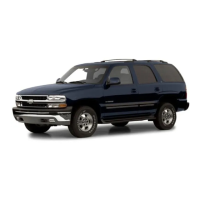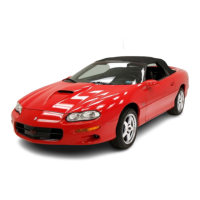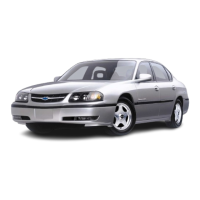Do you have a question about the Chevrolet Metro 2000 and is the answer not in the manual?
Adjusting and operating front seats, seatback latches, and folding rear seatbacks.
Instructions for adults on proper lap-shoulder belt usage and driver position.
Explanation of the vehicle's driver and front passenger air bag systems.
Guidance on child safety, including restraints and air bag precautions.
Information on vehicle ignition, door, and other lock keys.
Details on locking and unlocking vehicle doors for security and safety.
Explanation of the four positions of the ignition switch and their functions.
Overview of the instrument panel, including speedometer and tachometer.
Description of warning lights, gages, and indicators for vehicle status.
How to control heating, ventilation, and air conditioning systems.
Detailed operation of the climate control system's airflow and temperature levers.
Information on operating the AM-FM stereo, cassette, and CD player.
Methods for tuning radio stations using AM/FM, Tune, Seek, Scan, and Presets.
Principles of defensive driving, emphasizing readiness and anticipating others.
Information on alcohol's effects on driving ability and blood alcohol concentration.
Explanation of perception and reaction time in braking, and stopping distances.
Discussion on power steering, steering tips, and driving on curves.
Tips for safer night driving, including visibility and driver impairment.
How to use hazard warning flashers to alert others and indicate problems.
Safe procedures for jump starting a vehicle with a dead battery.
Steps to take if the engine overheats, including steam and coolant issues.
Guidance on handling a flat tire, including blowouts and safe stopping.
Step-by-step instructions for safely changing a flat tire.
Recommendations for gasoline octane, specifications, and potential engine issues.
Instructions and safety precautions for refueling the vehicle's fuel tank.
Identification of key components under the hood for inspection.
Guidance on checking engine oil level, type, and when to change it.
Information on tire maintenance, pressure, wear indicators, and replacement.
Details on maintenance intervals for short trip/city and long trip/highway driving.
Owner-performed checks and services required at specific intervals.
Inspections recommended at least twice a year by dealers or qualified centers.
List of recommended fluids, lubricants, part numbers, and specifications.
Steps to resolve concerns with dealers and Chevrolet customer assistance.
Information on roadside assistance services, basic and courtesy care.
Details on transportation options available during warranty repairs.
How to report vehicle safety defects to NHTSA.
Adjusting and operating front seats, seatback latches, and folding rear seatbacks.
Instructions for adults on proper lap-shoulder belt usage and driver position.
Explanation of the vehicle's driver and front passenger air bag systems.
Guidance on child safety, including restraints and air bag precautions.
Information on vehicle ignition, door, and other lock keys.
Details on locking and unlocking vehicle doors for security and safety.
Explanation of the four positions of the ignition switch and their functions.
Overview of the instrument panel, including speedometer and tachometer.
Description of warning lights, gages, and indicators for vehicle status.
How to control heating, ventilation, and air conditioning systems.
Detailed operation of the climate control system's airflow and temperature levers.
Information on operating the AM-FM stereo, cassette, and CD player.
Methods for tuning radio stations using AM/FM, Tune, Seek, Scan, and Presets.
Principles of defensive driving, emphasizing readiness and anticipating others.
Information on alcohol's effects on driving ability and blood alcohol concentration.
Explanation of perception and reaction time in braking, and stopping distances.
Discussion on power steering, steering tips, and driving on curves.
Tips for safer night driving, including visibility and driver impairment.
How to use hazard warning flashers to alert others and indicate problems.
Safe procedures for jump starting a vehicle with a dead battery.
Steps to take if the engine overheats, including steam and coolant issues.
Guidance on handling a flat tire, including blowouts and safe stopping.
Step-by-step instructions for safely changing a flat tire.
Recommendations for gasoline octane, specifications, and potential engine issues.
Instructions and safety precautions for refueling the vehicle's fuel tank.
Identification of key components under the hood for inspection.
Guidance on checking engine oil level, type, and when to change it.
Information on tire maintenance, pressure, wear indicators, and replacement.
Details on maintenance intervals for short trip/city and long trip/highway driving.
Owner-performed checks and services required at specific intervals.
Inspections recommended at least twice a year by dealers or qualified centers.
List of recommended fluids, lubricants, part numbers, and specifications.
Steps to resolve concerns with dealers and Chevrolet customer assistance.
Information on roadside assistance services, basic and courtesy care.
Details on transportation options available during warranty repairs.
How to report vehicle safety defects to NHTSA.
| Brand | Chevrolet |
|---|---|
| Model | Metro 2000 |
| Category | Automobile |
| Language | English |











